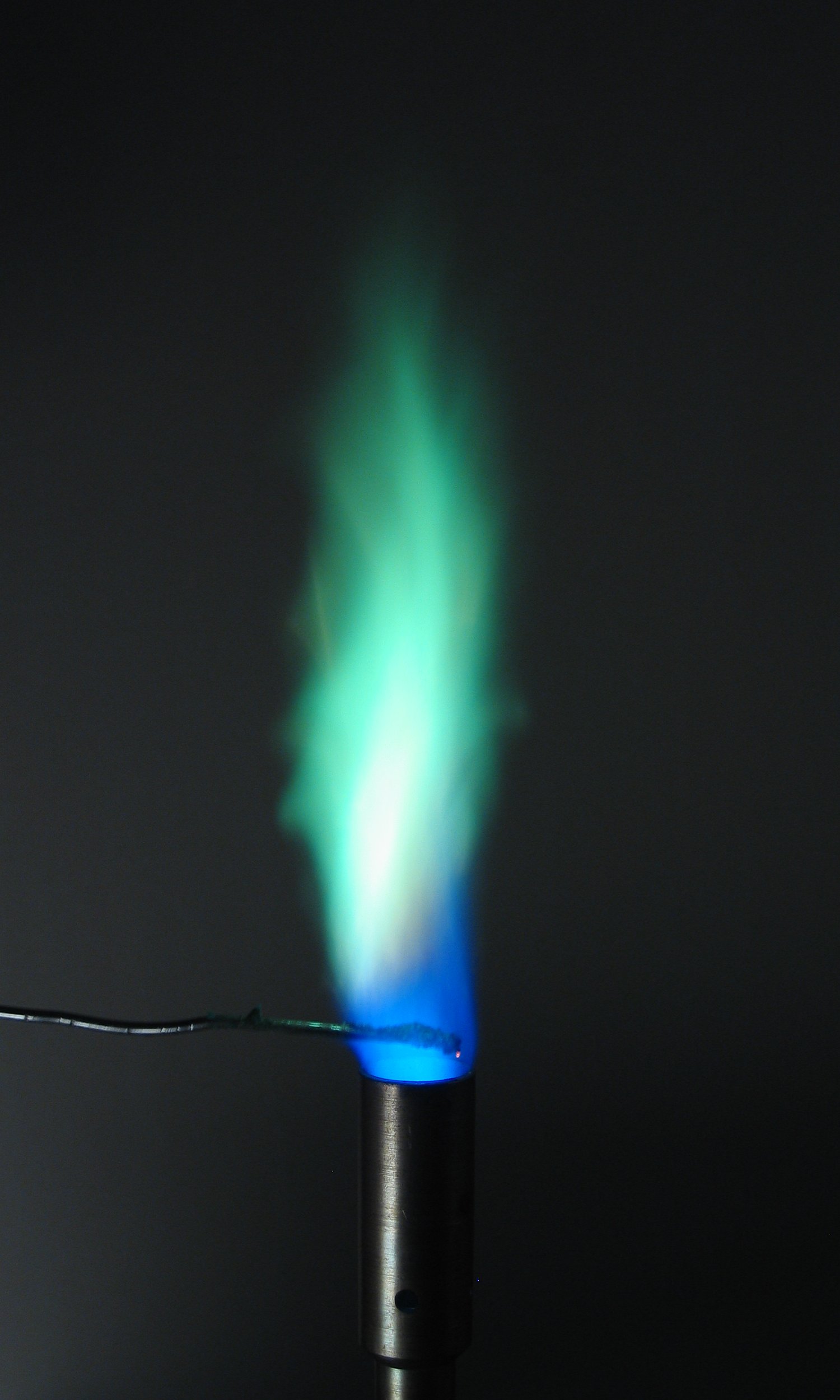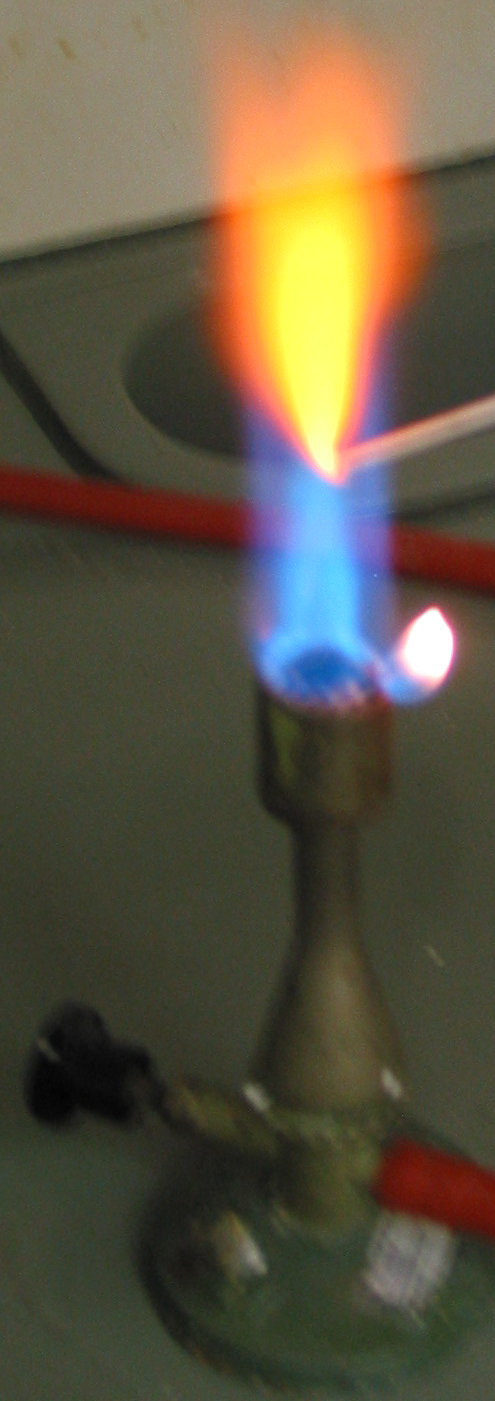Pyrotechnic colorants on:
[Wikipedia]
[Google]
[Amazon]



 A pyrotechnic colorant is a
A pyrotechnic colorant is a



 A pyrotechnic colorant is a
A pyrotechnic colorant is a chemical compound
A chemical compound is a chemical substance composed of many identical molecules (or molecular entities) containing atoms from more than one chemical element held together by chemical bonds. A molecule consisting of atoms of only one elemen ...
which causes a flame
A flame (from Latin '' flamma'') is the visible, gaseous part of a fire. It is caused by a highly exothermic chemical reaction taking place in a thin zone. When flames are hot enough to have ionized gaseous components of sufficient density they ...
to burn with a particular color
Color (American English) or colour (British English) is the visual perceptual property deriving from the spectrum of light interacting with the photoreceptor cells of the eyes. Color categories and physical specifications of color are associa ...
. These are used to create the colors in pyrotechnic composition
A pyrotechnic composition is a substance or mixture of substances designed to produce an effect by heat, light, sound, gas/smoke or a combination of these, as a result of non-detonative self-sustaining exothermic chemical reactions. Pyrotechnic s ...
s like firework
Fireworks are a class of low explosive pyrotechnic devices used for aesthetic and entertainment purposes. They are most commonly used in fireworks displays (also called a fireworks show or pyrotechnics), combining a large number of devices in ...
s and colored fire
Colored fire is a common pyrotechnic effect used in stage productions, fireworks and by fire performers the world over. Generally, the color of a flame may be red, orange, blue, yellow, or white, and is dominated by blackbody radiation from soot ...
s. The color-producing species are usually created from other chemicals during the reaction. Metal salts are commonly used; elemental metals are used rarely (e.g. copper for blue flames).
The color of the flame is dependent on the metal cation; the anion of the salt has very little direct influence. The anions however influence the flame temperature, both by increasing it (e.g. nitrates, chlorates) and decreasing it (e.g. carbonates, oxalates), indirectly influencing the flame brightness and brilliancy. For temperature-decreasing additives, the limit of colorant may be about 10–20 wt.% of the composition.
Some common examples are:
The * indicates that the compound will burn orange where x=0,2,3,5.
Radiating species
Despite the wide numbers of metal ion donors, they serve to form only a few atomic and molecular species that are useful as light emitters. In many cases, chlorine donors have to be added in order to achieve sufficiently deep colors, as the desired emitting molecules have to be generated. Some color emitters are of atomic nature (e.g. lithium, sodium). Presence of chlorine, and the reaction to monochlorides, may actually impair their color purity or intensity. At high temperatures, the atoms will ionize. The emission spectra of ions are different than of neutral atoms; the ions may emit in undesired spectral ranges. For example, Ba+ emits in blue wavelengths. Ionization can be suppressed by addition of an easier-to-ionize metal with weak visible emission of its own, e.g. potassium; the potassium atoms then act as electron donors, neutralizing the barium ions. The color blue is notoriously difficult to produce in fireworks, as the copper compounds need to be heated at a specific temperature for the optimal shade of blue to be produced. Thus, a deep, rich blue is usually viewed as the mark of an experienced fireworks maker. Care should be taken to avoid formation of solid particles in the flame zone, whether metal oxides or carbon;incandescent
Incandescence is the emission of electromagnetic radiation (including visible light) from a hot body as a result of its high temperature. The term derives from the Latin verb ''incandescere,'' to glow white. A common use of incandescence is ...
solid particles emit black-body radiation
Black-body radiation is the thermal electromagnetic radiation within, or surrounding, a body in thermodynamic equilibrium with its environment, emitted by a black body (an idealized opaque, non-reflective body). It has a specific, continuous spec ...
that causes "washing out" of the colors. Addition of aluminium raises the flame temperature but also leads to formation of solid incandescent particles of aluminium oxide and molten aluminium. Magnesium has less such effect and is therefore more suitable for colored flames; it is more volatile than aluminium and more likely to be present as vapors than as particulates. Formation of solid particles of magnesium oxide can further be inhibited by presence of carbon monoxide, either by negative oxygen balance of the composition in presence of organic fuels, or by addition of the colorant in the form of an oxalate, which decomposes to carbon dioxide and carbon monoxide; the carbon monoxide reacts with the magnesium oxide particles to gaseous magnesium and gaseous carbon dioxide.
References
{{reflist